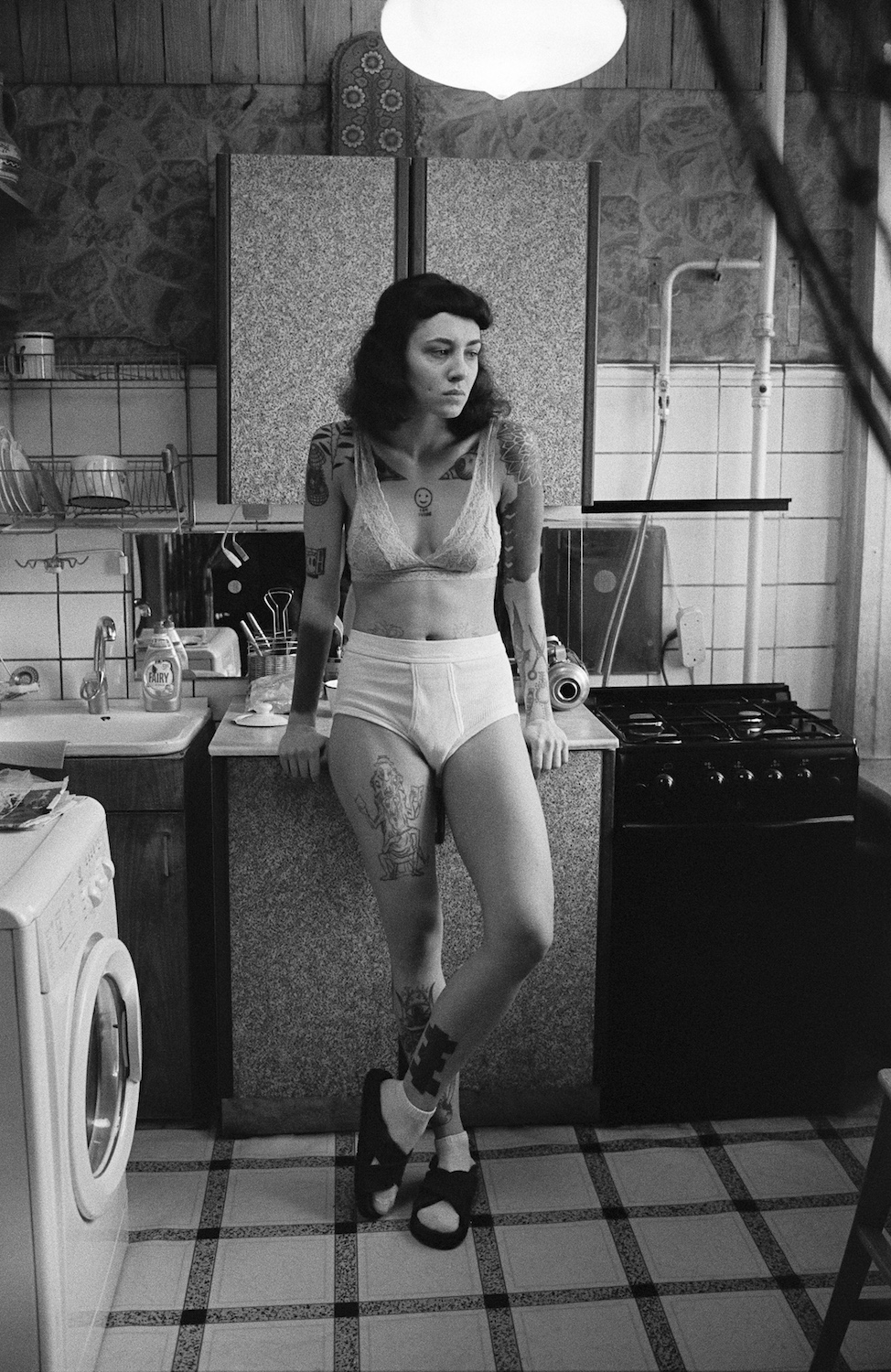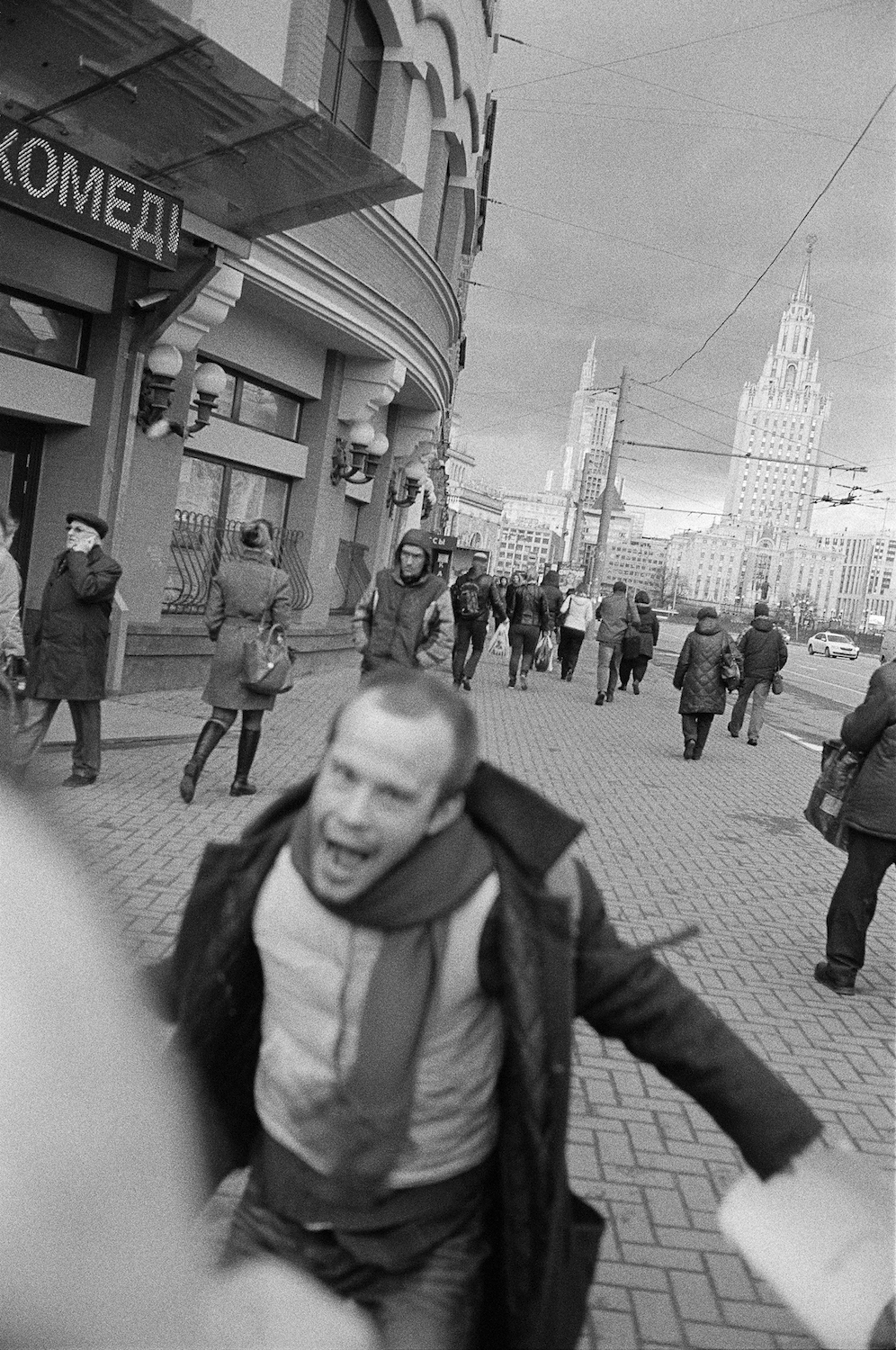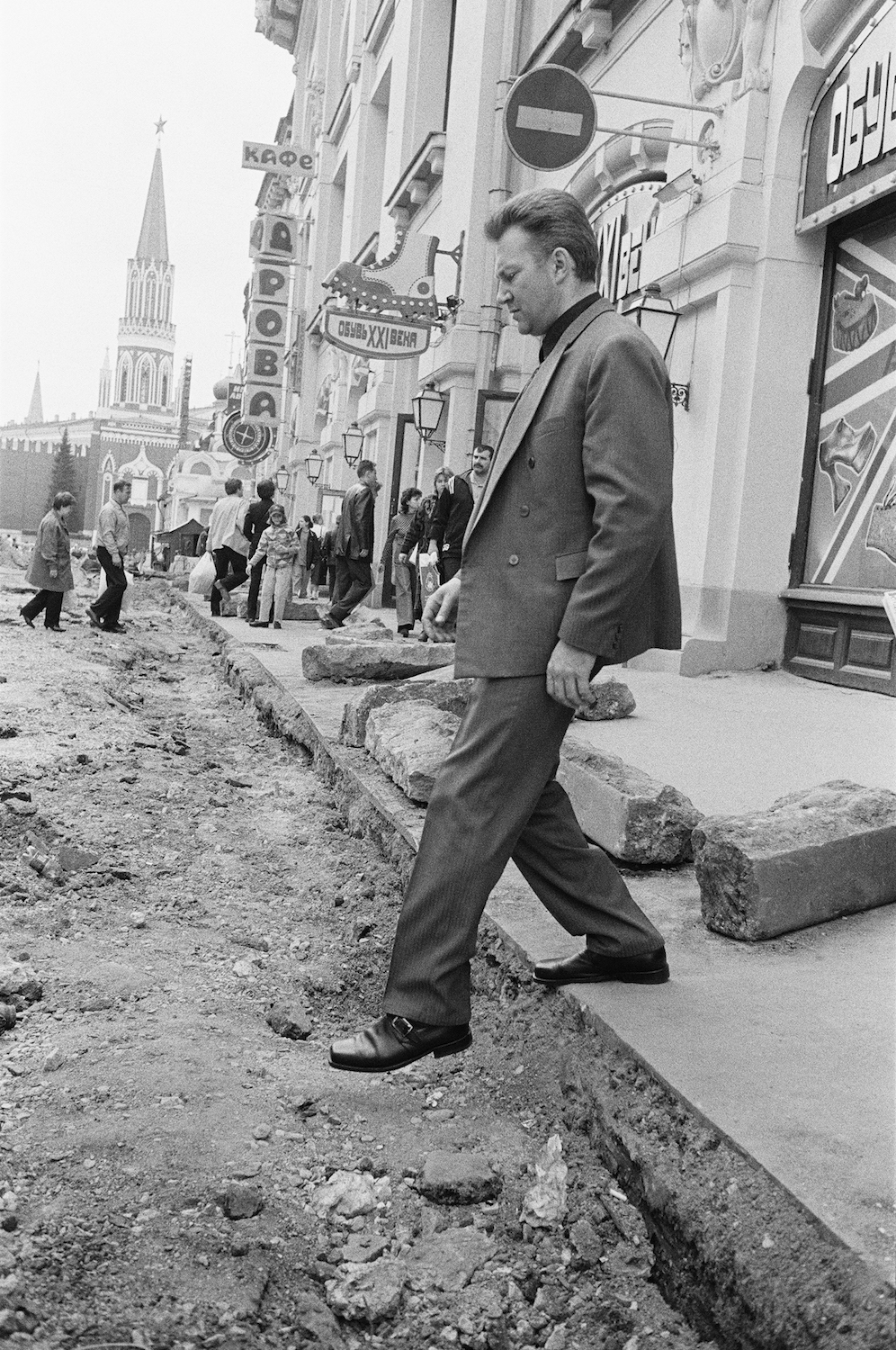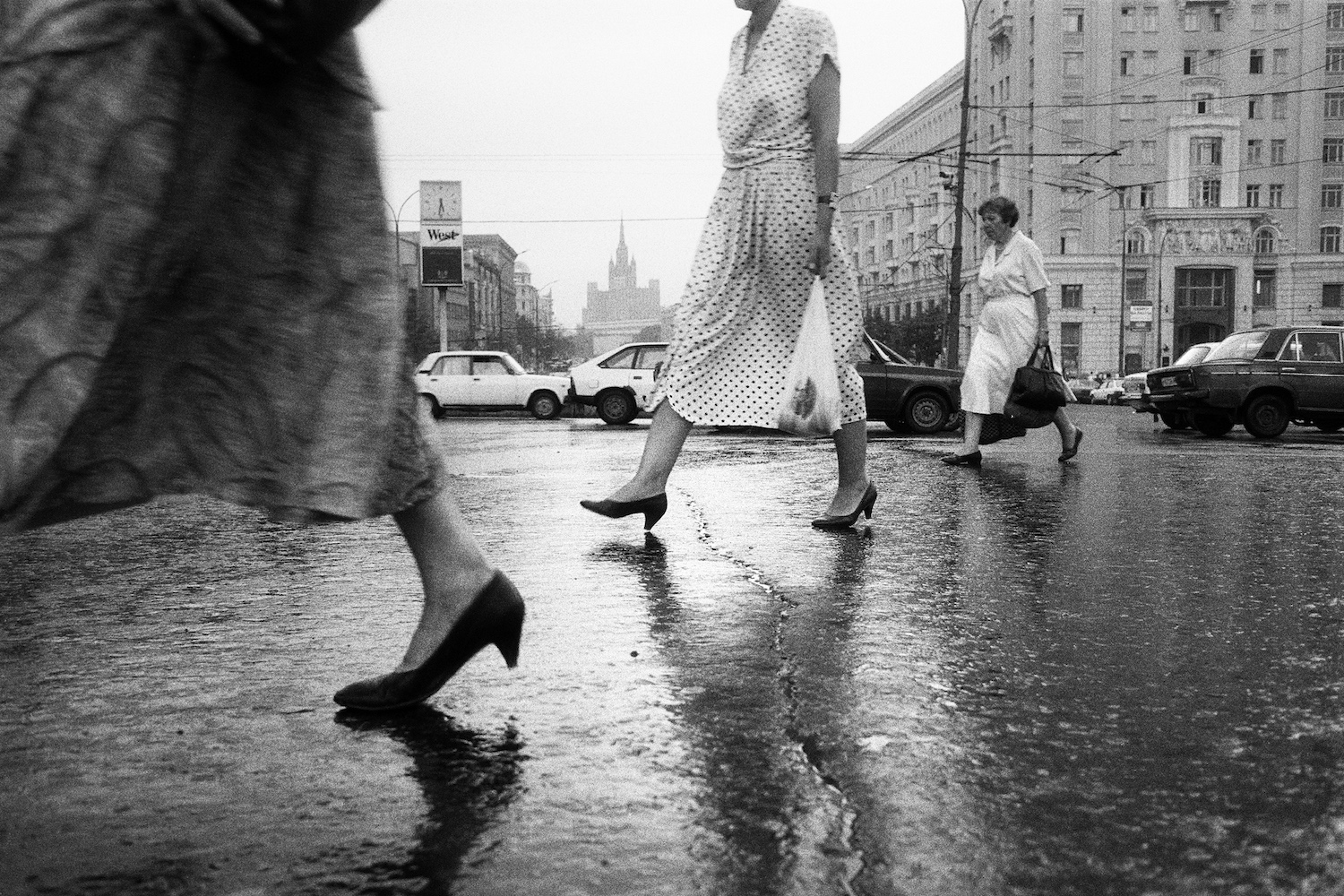“Russian artists who convey ‘real life’ stand in conflict with Russian power.” On the 30th anniversary of the fall of the Soviet Union, Mukhin reflects on photography as defiance in 1980s Moscow
This month marks the thirty-year anniversary of the fall of the Soviet Union, and Igor Mukhin’s photographs fittingly depict a mutating culture across more than three decades in the exhibition Générations: From the URSS to the New Russia, 1985-2021, currently on show at Gentilly’s Maison Doisneau until 9 January. The work is segmented into political periods – Gorbachev, Yeltsin, endless Putin – which situate the images within the country’s history of socio-economic agitation. Through observational details, Mukhin reveals how the populace’s relationship to public space has evolved over time, from Russia’s colossal monuments to shifting iconography.
Mukhin (born in 1961) was exposed to the photographic medium through cultural happenings in mid-80s Moscow: notably an exhibition of Henri Cartier-Bresson photographs – which piqued an interest in depicting what happened in the streets – and a book fair with international publishers, where vitrines of photography books awakened him to visual practices that flourished elsewhere. His own debut spotlit Moscow’s underground rock scene in the 80s: a rowdy and playful counterculture, which saw youthful clusters smoking and slouching and clasping at one another in stylish attire or various states of undress. The small, tight-knit community fascinated young Mukhin. When he heard The Clash’s ‘London Calling’, he wondered: could he transmit that same energy through photography?
To try was no low-stakes endeavour. With the watchful eye of power always looming, the entire scene was confined to the shadows. People called each other from telephone booths rather than home phones for fear of surveillance; public space was too hazardous for leisurely hangouts. With many cultural activities illegal, everything happened “unofficially”. A camera-wielding Mukhin didn’t want to be confused with the KGB or a government threat.
But at the same time, events held even in private spaces were high-risk, and having a record of them was even more dangerous. If Mukhin was arrested, his rolls of film chronicled everything forbidden, from music concerts to drug consumption. His photos were printed in samizdat, (literally translating to ‘self-published’), a makeshift format to evade official Soviet censorship. “There’s continuity between poets, like [Anna] Akhmatova and [Vladimir] Mayakovsky, and rock musicians,” Mukhin says on a Zoom call from Moscow, by way of publisher Oliver Bergger as translator. “It’s the same circumstances of creating within a culture whose power structures discourage or prevent art forms. Russian artists who convey ‘real life’ stand in conflict with Russian power.”
Later, Mukhin switched his focus to street photography, often tinged with a sly sense of absurdist humor. He had a canny relationship to crowds and group dynamics, creating ensemble portraiture of disparate people in plain sight. He was attentive to the contrast between old world and new world within the same frame, like the juxtaposition of a Soviet building behind a modern-looking businessman, or a Western brand of cigarettes advertised aloft from a trio of women in conventional dress traversing a crosswalk. Discretion being paramount, Mukhin would time the shutter to release when people were walking in front of watching guards.
In 1991, when the USSR fell, it became harder to photograph in the street. People took it as a form of aggression. So Mukhin paused, pivoting to photographing monuments. He restarted street photography in the mid-1990s, feeling it was important to take the temperature of the culture through encounters with ordinary people. While other photographers were chronicling the war in Chechnya, he wanted to capture what the effect of the war was doing to urban denizens at home; how the feeling of catastrophe impacted the day-to-day.
Mukhin’s images tacitly demystify Russian clichés – the ones exported through folkloric literary tropes or bombastic political caricature – by virtue of simply showcasing anonymous people in daily life. He notes that Europeans interpret his street photos as “documentary,” whereas Russians deemed his images “too artistic” for press use (and in fact, his work has been little published on his home turf). Mukhin himself refuses to qualify his career, which has taken different directions, from artist portraits to cataloguing ceremonial affairs.
His book Resistance – which encapsulates twenty years of demonstrations across the entire political spectrum, from communism to fascism – “shows neither sympathy nor antipathy” with any particular cause. Putting them together highlights what society broadly encompasses. “Today, there’s no right to political engagement,” Mukhin says of his native country — within photography, or otherwise. His aim is to be descriptive, to have a birds-eye view, rather than a point of view.
Still, when banal gestures – like listening to punk music – become politicized because they can’t be done openly, cataloguing these discreet transgressions becomes a meaningful gesture. “The earliest images I made when I was young, I wasn’t conscious of them as political,” he says. “The readership was small, so that lack of reach was not politically effective.” But when expressing oneself freely isn’t an option, the act of doing it anyway is a bold act, irregardless of activist intention.
Générations: From the USSR to the New Russia, 1985-2021 is on show at Maison Doisneau until 09 January
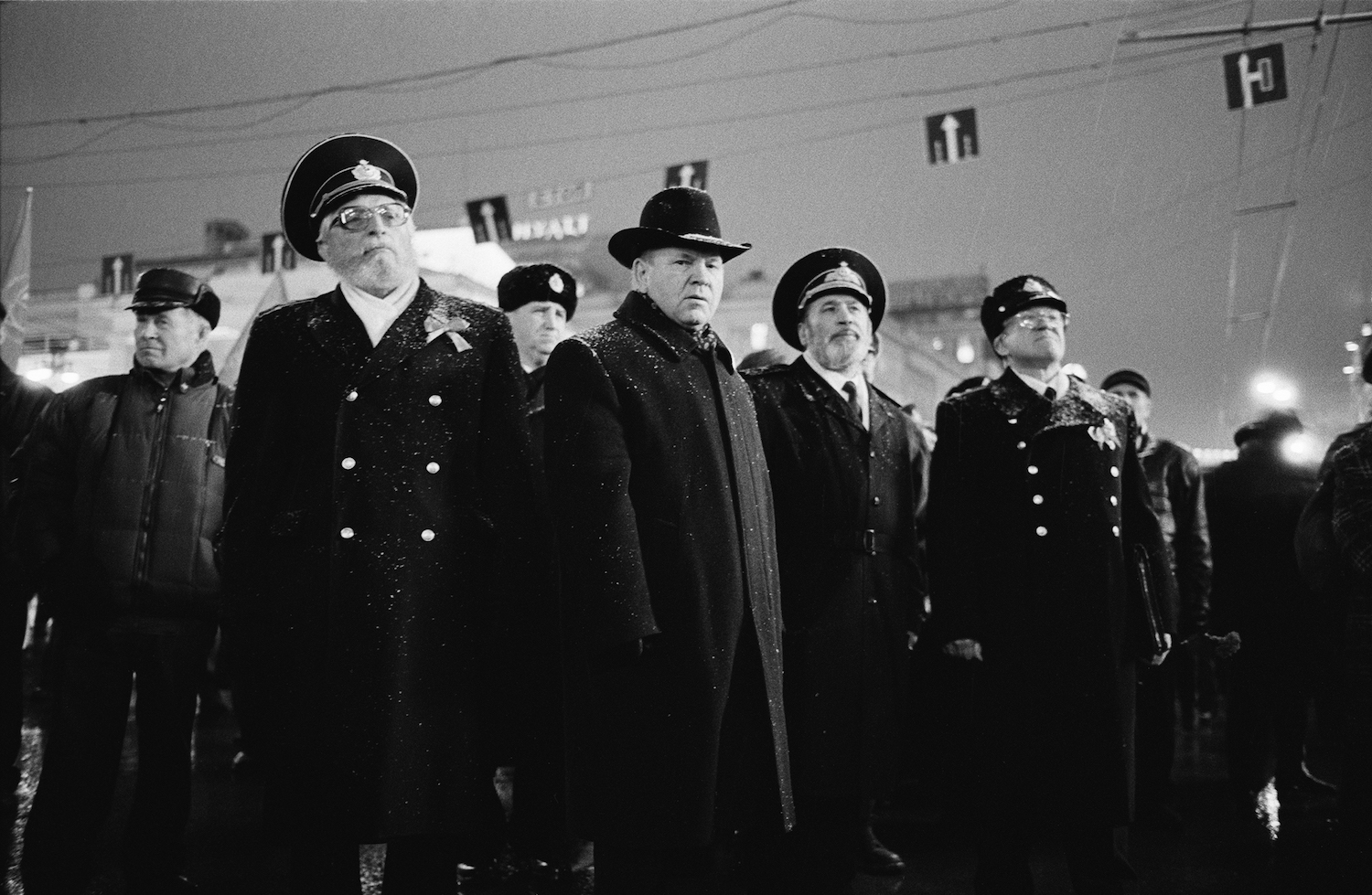
The post Igor Mukhin on documenting the underground youth culture of Soviet Russia appeared first on 1854 Photography.

